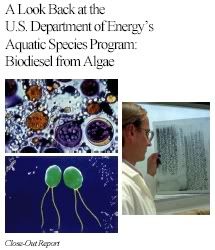My friends - Wake-up!
Take a look at this graph from "The Oil Drum":
 Complicated? Nee. It shows you different scenarios by different agencies around the world about how much Oil is actually left to produce. Please note that every curve peaks between 2008 and 2012. That is now, today!
Complicated? Nee. It shows you different scenarios by different agencies around the world about how much Oil is actually left to produce. Please note that every curve peaks between 2008 and 2012. That is now, today!I wrote earlier about the possible Oil Bubble, you can read that story here, looking at the graph above it is probably likely that prices will just continue to raise, after all here is a clear example of supply and demand, no? Looking at the Oil price development from 1999 and projecting towards end of 2012 we see the following trends:

To compensate for the weak dollar I just added in the currency exchange rate to get the Oil prices in Euro and the truth is probably some where in between, so in the big picture Oil prices is not in a bubble, at least not a big one, we are running out of supply!
You may say that this is due to speculation, yes it is true in part, according to BBC yesterday the current invested "speculation" capital in oil commodity is equivalent to the current consumption of China, to put that in a context China is using some 7.500 thousand barrels per day and the world consumption is 85.000 thousand barrels per day. So less then 9% of the current oil price should be due to speculation, but probably a lot of people are banging on the continued raise so let's say that some 25%, or USD33 is due to speculation, still giving us a price per barrel over USD100.
This is my own crazy predictions, let us see what the traders on Wall Street thinks about the future of Oil:
So let us reflect a little about this and put things in our own perspective. Clean up the graph and put in concrete measures and you will end up with this:
 In just 12 years, when Karl is to go into Secondary school and to start chasing skirts, oil is finished, no more, zip......maybe...
In just 12 years, when Karl is to go into Secondary school and to start chasing skirts, oil is finished, no more, zip......maybe...Let's assume that it is not that bad, so maybe another 10 years (Karl 24) another 20 years (Karl 34) no matter how we are trying, the generation that we have brought to the world will suffer badly in their lifetime, that is a fact.
Now this is only taking into account the use of oil, and its potential impact of the world as it is. What about the global warming issue:
So is Biofuels the answer to our problem? Well I am convinced that the current generation of Biofuels does more harm than good. You can argue this from many points of views and here is one point of view from the side of the spectrum that thinks current use of Biofuels are madness:
Earlier this year BBC ran an full week story about the state of Oil and Climate change and one thing that stuck to my mind was the fact that; if you drive a Range Rover Sport in London for a year on Biofuels, you use up are much grains enough to feed a whole village of 200 people in Africa for the whole year. I like Range Rover Sport, as a matter a fact I was thinking of getting one, but this is just crazy.
As a Swede I grew up with Greenpeace and Treehuggers and it was just not cool, nerds in funny bag packs and "no to everything" attitude. Now things are different and I do believe that the only way to change the current situation is to make CleanTech a business, and it will probably be the biggest business opportunity we have aver faced, it will dwarf the Internet craze back in the 90's.
If you are interested in CleanTech and would like to know some more, here is a great 20 minute report from BBC, link.
What we for sure can do today is to start reducing our energy consumption, drive less, go and change your light bulbs, use less heat/air-condition, use less water, reduce waste, etc.
Think through your current situation, think your next career move, what can you do, you are smart, you can help without sacrificing much, if any at all...
Join in and do your part - Today.
Stay tuned....
Per



